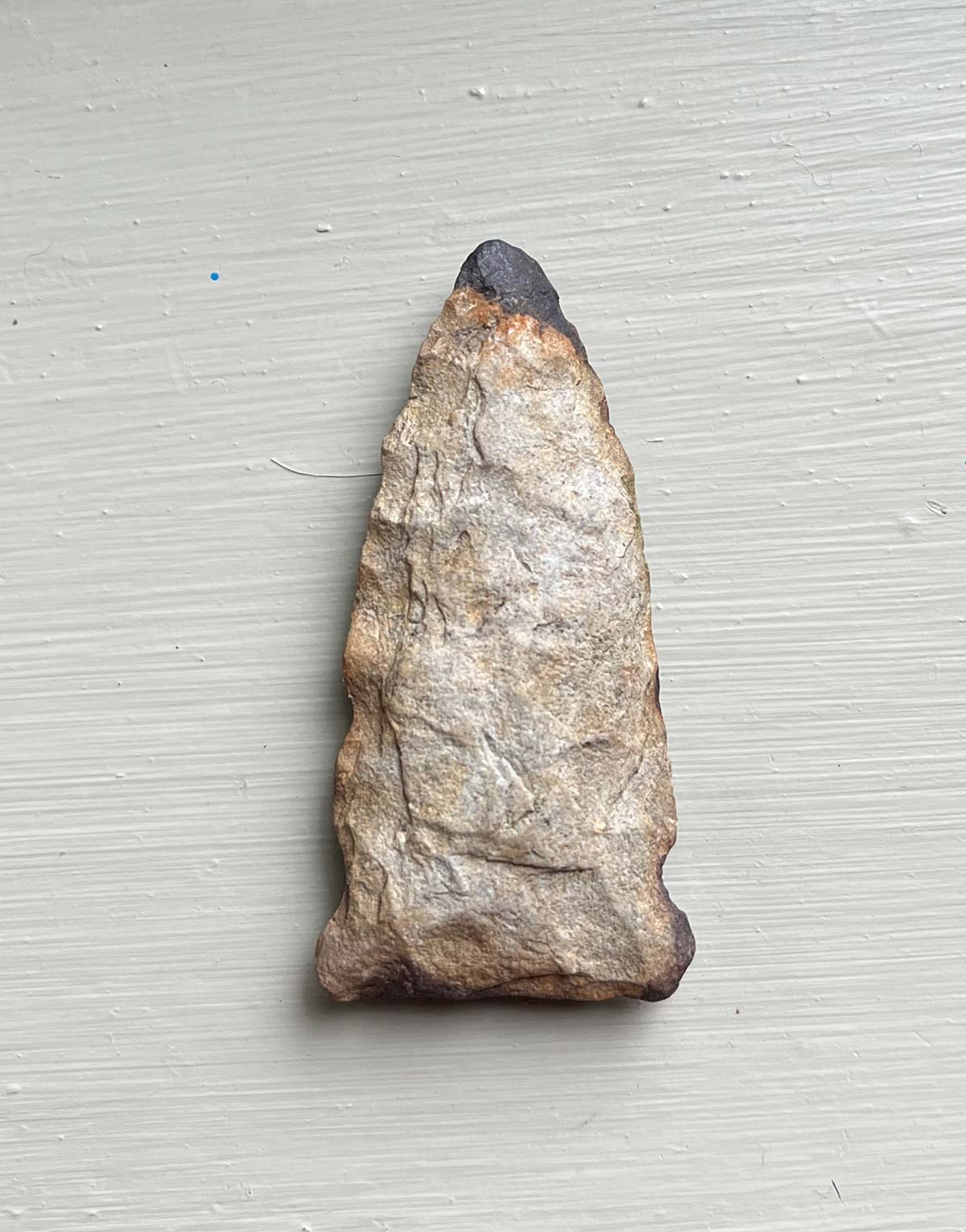We’ve covered the fact that I have a hopelessly obsessive personality, but what might be unique about me is that, when I focus on something, I have to put all of my personal bandwidth into that one thing. I actually don’t believe it’s possible for a normal person, ie, not in MENSA, to fully immerse oneself into multiple obsessions.
I have had a (literally) rocky relationship with one of my most cherished hobbies and that is hunting for Native American artifacts. The relationship has been a dance of on-again-off-again love affairs that ignite into raging infernos when I make a great find and then smolder into the depths of frustration when I lose my mojo and can’t quiet my mind long enough to concentrate on what I’m looking for.
One of the great things about artifact hunting is that it goes hand in hand with fishing. Many great fishing spots have been productive locations for millennia and the ancient people that inhabited these lands were fishing them long before all of the King Henrys and even before the first pharaoh was entombed in the Valley of the Kings. If you’ve fished from shore in the tidal rivers and salt ponds of New England, I guarantee you have stepped over at least one arrowhead in your life. I’d bet the bank account on it.

The other day I found myself standing on a gravelly point, at low tide. Hard northeast winds had been battering the shoreline for several days, stepping up the effects of erosion on the bank. It was a spot where I had caught many fall stripers in the past, but it was also a spot where more than a couple arrowheads, or ‘points’ as most collectors call them, had seemed to materialize at my feet when hard winds eroded the shore.
I found myself torn. Staring out over the water but seeming to hear the call of an exposed, but hidden gem among the stones and sediment around my boots. My eyes scanned casually at first, as I tried to resist the urge to kneel down and look deeper between the millions of stones on the shoreline. The urge became so great that it started to grow into a growling anxiety in my gut. I gave in and knelt on a flat rock to look around.
Before I knew it, I looked back and saw my rod and reel laying more than 100 feet behind me. I had inched along the shore searching the stones and found nothing. Making the decision to stop looking is every bit as difficult as making a real last cast. There’s always this nagging brain jab that makes you believe that the next patch of gravel will hold what you’re hoping for. I peered down into a space between two potato-sized rocks and saw a shard of stone that stood out, it showed manipulation, it had the elongated lanceolate shape and was convex in cross-section. As I wiggled it free from the mud with my finger, I caught myself holding my breath.
A nearly-perfect ‘point’ unmolded from the mud, a 2-inch symmetrical blade, with c-shaped notches. Made from a fine grade of gray quartzite. The typology (a word used to describe the style of the point) is known as an Otter Creek and dates back 5,200 to 6,000 years according to the book I use to “type” my finds.
These moments are always laced with electricity. The magnitude of being connected by consecutive touch with its maker, a timespan of thousands of years, can sometimes feel overwhelming and I try to do my best to honor that by taking the time to appreciate what 6,000 years really means. That span of time is unfathomable to a human being that hopes to live to age 80. But I try to wrap my head around it every time I’m blessed with the opportunity to recover something lost so long ago, that my mind can’t comprehend it.



